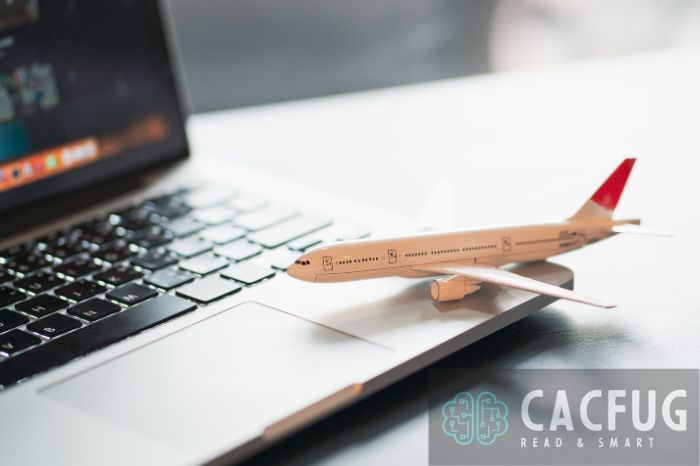Keeping your laptop safe while traveling is crucial for ensuring its longevity and performance. Whether you’re commuting to work, traveling for leisure, or simply carrying your laptop around town, knowing how to protect it in your backpack can save you from potential damage and data loss. This article will guide you through the best practices and tips on how to keep a laptop safe in a backpack. We’ll cover everything from choosing the right backpack to daily maintenance and security measures.
Choosing the Right Backpack
A well-designed backpack is the first line of defense for your laptop. The right backpack not only protects your laptop from drops and impacts but also ensures it remains safe from environmental factors such as rain and dust.
Having a dedicated laptop compartment is essential for:
- Security: Preventing the laptop from shifting and colliding with other items.
- Protection: Providing extra padding and shock absorption.
Features to Look For
When selecting a backpack, consider the following features:
- Padded Compartments: To cushion the laptop against shocks and impacts.
- Water Resistance: To protect against spills and rain.
- Secure Zippers and Anti-Theft Features: To prevent unauthorized access.
- Ergonomic Design: For even weight distribution and comfort during long periods of carrying.
Recommended Laptop Backpack Brands

One brand known for its excellent laptop protection is Coowoz coowoz.net Their travel backpacks offer a combination of durability, functionality, and security features designed specifically for safeguarding your laptop.
Proper Packing Techniques
A laptop sleeve adds an extra layer of protection:
- Benefits: Additional cushioning, protection from scratches, and dust.
- Choosing the Right Sleeve: Ensure it fits snugly around your laptop without being too tight or too loose.
Placement in Backpack
Proper placement can significantly reduce the risk of damage:
- Close to Your Back: Place the laptop in the compartment closest to your back for better weight distribution and stability.
- Avoid Heavy Items on Top: Prevent other items from exerting pressure on the laptop.
Organizing Other Items
- Keep Sharp Objects Separate: Avoid placing items like keys and pens in the same compartment as your laptop.
- Distribute Weight Evenly: To maintain balance and prevent strain on any part of the backpack.
Daily Care and Maintenance
Regular Cleaning
- Cleaning the Laptop Compartment: Remove dust and debris regularly to avoid scratches.
- Preventing Dust and Dirt Build-Up: Use compressed air or soft brushes for cleaning.
Inspecting for Damage
- Checking Zippers, Straps, and Padding: Ensure all components are in good condition.
- Ensuring the Laptop Sleeve is Intact: Replace if it shows signs of wear and tear.
Routine Laptop Care
- Regular Physical Checks: Inspect your laptop for any signs of damage.
- Turning Off or Sleep Mode: Ensure the laptop is properly shut down or in sleep mode before packing.
Traveling with a Laptop

Airport Security Tips
- Removing the Laptop for X-ray Screening: Follow TSA guidelines and place your laptop in a separate bin.
- Keeping an Eye on Your Laptop: Be vigilant and ensure it doesn’t get left behind or stolen.
Public Transport Precautions
- Avoid Placing the Backpack on the Floor: To prevent it from being stepped on or kicked.
- Keeping the Backpack in Sight: To deter theft and accidental damage.
Handling Extreme Temperatures
- Protecting Against Heat and Cold: Avoid leaving your laptop in cars or direct sunlight for extended periods.
- Avoiding Direct Sunlight and Extreme Humidity: Store the laptop in cool, dry places whenever possible.
Enhancing Security
Anti-Theft Measures
- Using Lockable Zippers: To prevent unauthorized access.
- Anti-Theft Backpacks with Hidden Pockets: For added security of your valuables.
Tracking Devices
- Using GPS Trackers: For added security in case your backpack is lost or stolen.
- Smartphone Apps: To help locate lost items.
Alternative Solutions
- Hard Cases for Extra Protection: Ideal for high-risk environments or rough handling.
- When to Use a Case Over a Sleeve: Consider the level of protection needed based on your travel habits.
- Messenger Bags and Briefcases: Offer easy access and professional appearance.
- Pros and Cons Compared to Backpacks Like Coowoz: Consider the trade-offs in terms of protection, convenience, and style.
Additional Tips and Tricks
Be mindful of the weight and distribution of items in your backpack. Invest in a waterproof cover for added protection. Stay informed about the latest advancements in laptop protection.
The Bottom Line
In summary, keeping your laptop safe in a backpack involves choosing the right backpack, packing it properly, maintaining it regularly, and taking necessary security measures. By following these tips, you can ensure your laptop remains safe and functional for years to come. Implement these strategies and enjoy peace of mind knowing your laptop is well-protected.
Feel free to share your own tips and experiences in the comments below. If you have any questions, don’t hesitate to ask. For more information on related topics, check out our other articles on laptop care and protection.





